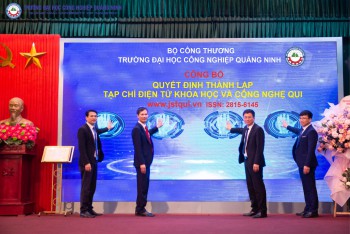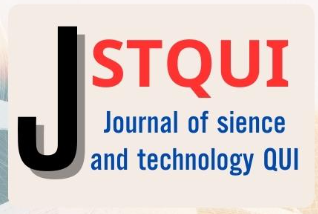Nghiên cứu phát triển phần mềm tự động thiết kế hộ chiếu khoan nổ mìn trong autocad cho đường hầm
Study on developing an automatic software to design tunnel blasting passport in autocad
Nguyễn Ngọc Minh, Nguyễn Văn Đức, Hồ Trung Sỹ, Nguyễn Mạnh Tường
Tóm tắt
Tự động hóa quy trình thiết kế hộ chiếu khoan nổ mìn tạo biên cho đường hầm là vấn đề cấp thiết trong điều kiện thực tế của nước ta. Bài báo trình bày về phương pháp phát triển phần vẽ tự động trong AutoCAD dựa trên những cơ sở lý luận về phương pháp tối ưu, phương pháp đồ thị cũng như thuật toán vẽ tự động trong AutoCAD. Tương tác của phần mềm với AutoCAD là yếu tố mới và quan trọng giúp hoàn thiện một chu trình khép kín tự động trên máy tính từ nhập dữ liệu đến xuất ra hộ chiếu trong AutoCAD nhờ đó góp phần tăng hiệu quả sản xuất và giảm rủi ro trong công tác đào đường hầm.
ABSTRACT:
Automating the process of designing tunnel blasting passport to create smooth boundaries is an urgent issue in country’s actual conditions. This paper presents the method of developing automatic design software based on the optimization foundation theoretical methods, graphical methods as well as automatic drawing in AutoCAD methods. The software's interaction with AutoCAD is a new and important factor to help completing an automatic closed cycle on the computer from data entry to blasting passport export in AutoCAD, thereby contributing to increasing production efficiency and reducing risks in tunnel excavation.
Keywords: Smooth blasting, drilling and blasting software, drilling and blasting passport, tunnel blasting.
Automating the process of designing tunnel blasting passport to create smooth boundaries is an urgent issue in country’s actual conditions. This paper presents the method of developing automatic design software based on the optimization foundation theoretical methods, graphical methods as well as automatic drawing in AutoCAD methods. The software's interaction with AutoCAD is a new and important factor to help completing an automatic closed cycle on the computer from data entry to blasting passport export in AutoCAD, thereby contributing to increasing production efficiency and reducing risks in tunnel excavation.
Keywords: Smooth blasting, drilling and blasting software, drilling and blasting passport, tunnel blasting.
Tệp toàn văn
Tài liệu tham khảo:
1. VERMA H K, SAMADHIYA N K, SINGH M, GOEL R K, and SINGH P K. Blast induced rock mass damage around tunnels[J]. Tunnelling and Underground Space Technology, 2017, 71 (July 2017):149-158.2. SPATHIS A T (Ed). Tunnelling in Rock by Drilling and Blasting[eB]. London: Taylor & Francis Group, 2013.
3. HU Ying-guo, LU Wen-bo, CHEN Ming, YAN Peng, and YANG Jian-hua. Comparison of blast-induced damage between presplit and smooth blasting of high rock slope[J]. Rock Mechanics and Rock Engineering, 2014, 47(4): 1307-1320.
4. LIU Kai-yun and LIU Bao-guo. Optimization of smooth blasting parameters for mountain tunnel construction with specified control indices based on a GA and ISVR coupling algorithm[J]. Tunnelling and Underground Space Technology, 2017, 70 (March 2017): 363-374.
5. MAN Ke, LIU Xiao, WANG Ju and Wang Xi-yong. Blasting Energy Analysis of the Different Cutting Methods[A]. Shock and Vibration, 2018, Vol. 2018: 1-13.
6. XIE L X, LU W B, ZHANG Q B, JIANG Q H, WANG G H, and ZHAO J. Damage evolution mechanisms of rock in deep tunnels induced by cut blasting. Tunnelling and Underground Space Technology, 2016, 58: 257–270.
7. LÊ VĂN QUYỂN J. Tính toán các thông số và lập hộ chiếu khoan nổ mìn bằng phần mềm Blast-Designer 1.0. Tạp chí KHKT Mỏ - Địa chất, số 14, 4/2006, tr.33.36..
8. BERTA G. Explosives : an engineering tool[J]. Italesplosive, 1990, 6: 452–460.
9. HOLMBERG R (Ed). Explosives and Blasting Technique[eB]. Lisse: A.A. Balkema, 2003.
10. OLOFSSON S O. Applied Explosives Technology for Construction and Mining[B], Arla: Applex P.O. Box 71 S-640 43 ARLA, 1990.
11. ZHOU Chuan-bo, WANG peng, LEI Yong-jian, YIN Xiao-peng. Optimization on cut-hole of mining tunnel excavation[J]. Mining Science and Technology, 2009, 19(1): 70–73.
12. ZARE S and BRULAND A. Comparison of tunnel blast design models[J]. Tunnelling and Underground Space Technology, 2006, 21(5): 533–541.
13. JIMERO C L, JIMERO E L and CARCEDO F J A. Drilling and blasting of rocks[B]. London: Taylor&Francis Group, 1995.
14. ZHANG Zong-xian. Rock Fracture and Blasting Theory and Applications[eB]. Oxford: Butterworth-Heinemann, 2016.
15. LANGEFORS U and KIHLSTROM B. The modern technique of rock blasting[B]. Stockholm: Almqvist & Wiksell Forlag AB, 1978.
16. NOGEL J O. Rock fragmentation with explosives[B]. La Habana: Felix Varela, 1998. (in Spanish)
Ý kiến bạn đọc
Bạn cần đăng nhập với tư cách là Thành viên chính thức để có thể bình luận
Tin xem nhiều
-
 Trường Đại học Công nghiệp Quảng Ninh long trọng tổ chức Lễ công bố Quyết định thành lập Tạp chí điện tử Khoa học và Công nghệ
Trường Đại học Công nghiệp Quảng Ninh long trọng tổ chức Lễ công bố Quyết định thành lập Tạp chí điện tử Khoa học và Công nghệ
- Cán bộ, đảng viên với việc tu dưỡng đạo đức cách mạng trong điều kiện kinh tế thị trường định hướng xã hội chủ nghĩa ở Vệt Nam hiện nay
- Lồng ghép giáo dục kỹ năng sống cho học sinh THPT thông qua các chủ đề hóa học
- Áp dụng mô hình “Blended learning” trong giảng dạy tiếng Anh cho sinh viên Trường Đại học Công nghiệp Quảng Ninh
- Giải pháp nâng cao hiệu quả công tác quản lý giáo dục sinh viên năm thứ nhất tại Trường Đại học Công nghiệp Quảng Ninh
- Nghiên cứu lỗi của động cơ không đồng bộ roto lồng sóc 3 pha1,5kw 4 cực trong trường hợp sự cố thanh dẫn roto
- Xây dựng định mức năng suất và tiêu hao vật tư cho thiết bị khai thác và tuyển quặng tại tổ hợp dự án bô-xit Tân Rai và Nhân Cơ - TKV
- Phân tích và thiết kế bộ điều khiển hệ thống phân loại sản phẩm ứng dụng Logic mờ
- Áp dụng mô hình ARDL để xác định mối quan hệ giữa FDI, tiến trình công nghiệp hóa và tăng trưởng kinh tế của tỉnh Quảng Ninh
- Nghiên cứu mô hình Blended learning trong dạy học toán cao cấp tại Trường Đại học Công nghiệp Quảng Ninh

